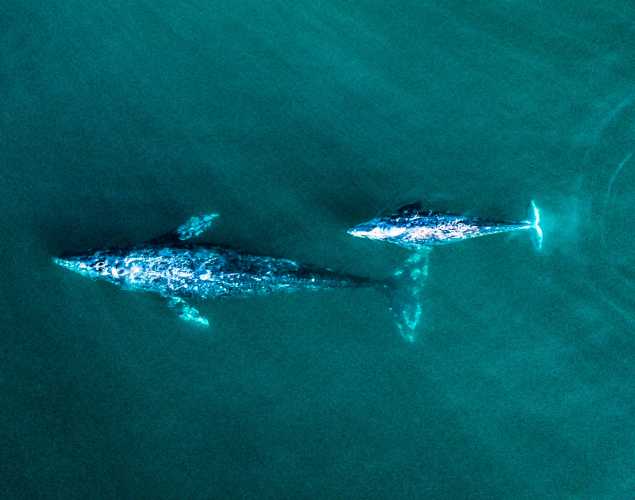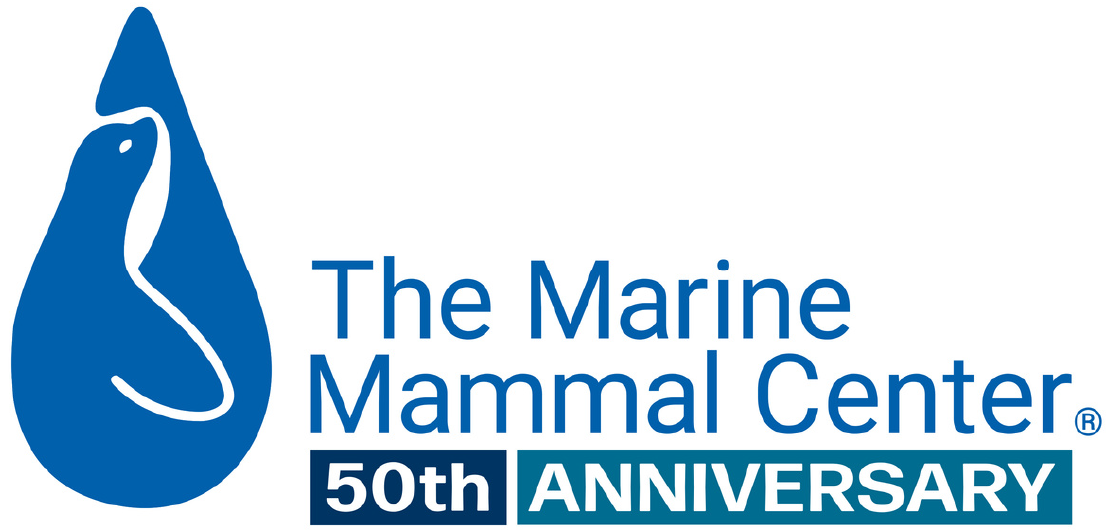
Observations of Tissue Healing Around an Implanted “C” Tag in a Gray Whale
- Telemetry
Abstract
Satellite-monitored radio tags that are embedded by remote darting into a whale's skin and underlying tissues, have been developed to monitor the location of whales for up to 14 months to provide data for conservation (Andrews et al., 2019; Hays et al., 2019; Mate & Harvey, 1983). These tags are termed “invasive” as they penetrate the integument of the animal and are often referred to as “implanted” tags. Some implanted tags have the electronic elements integrated with the attachments into a mostly subdermal rod and are collectively referred to as consolidated or “C” tags (Andrews et al., 2019). These tags have been attached to hundreds of mostly endangered whale species in recent years, including blue (Balaenoptera musculus), humpback (Megaptera novaeangliae), bowhead (Balaena mysticetus), fin (Balaenoptera physalus), North Atlantic and southern right (Eubalaena glacialis and E. australis), gray (Eschrichtius robustus), and sperm whales (Physeter macrocephalus) (Best et al., 2015; Irvine et al., 2014; Lagerquist et al., 2019; Mate et al., 2011, 2015; Robbins et al., 2013; Rosenbaum et al., 2014; Zerbini et al., 2016). While the data generated by these studies can be used to protect whale populations (from ship strikes, fisheries entanglements, mining, marine energy), and identify ranges, migration paths, and stock issues, the attachment of an implanted tag to an individual whale causes a wound and potential associated pain or discomfort (Moore et al., 2013). Thus, tagging studies need to consider possible detrimental health impacts of using some tag types to individual whales versus the conservation benefits to species. There are few studies on the long-term impact of invasive tagging on the health and survival of tagged whales due to the limited ability to track and examine individuals once tags cease to transmit, leading to a paucity of information on healing of tag associated wounds.
Goley, P.D., Calambokidis, J., Duignan, P., Gulland, F.M., Halaska, B., Lui, A., Martinez, M. and Mate, B., Observations of tissue healing around an implanted “C” tag in a Pacific Coast Feeding Group gray whale (Eschrichtius robustus). Marine Mammal Science.
Meet The Experts
{"image":"\/People\/Portrait\/cropped-images\/Padraig Duignan-0-56-635-496-1601760621.jpg","alt":"Padraig Duignan","title":"P\u00e1draig Duignan","text":"Director of Pathology","link_url":"https:\/\/www.marinemammalcenter.org\/person\/padraig-duignan","link_text":"Read Bio"}

Related Publications
{"image":"\/Animals\/Patients\/Harbor seals\/2013\/hs-agaptimoss-by-stan-jensen-c-the-marine-mammal-center.jpg","alt":"harbor seal with a satellite tag and antennae on its head","title":"Recommendations for the Use of Tracking Devices on Seals and Sea Lions","link_url":"https:\/\/www.marinemammalcenter.org\/publications\/recommendations-for-the-use-of-tracking-devices-on-seals-and-sea-lions","label":"Research Paper"}

{"image":"\/Animals\/Patients\/Harbor seals\/2023\/cropped-images\/hs-turbo-by-bill-hunnewell-c-the-marine-mammal-center-2-214-3160-2468-1692045795.jpg","alt":"harbor seal pup in the water","title":"Harbor Seal Pup Dispersal and Individual Morphology, Hematology, and Contaminant Factors Affecting Survival","link_url":"https:\/\/www.marinemammalcenter.org\/publications\/harbor-seal-pup-dispersal-and-individual-morphology-hematology-and-contaminant-factors-affecting-survival","label":"Research Paper"}

Harbor Seal Pup Dispersal and Individual Morphology, Hematology, and Contaminant Factors Affecting Survival
Read More{"image":"\/Animals\/Patients\/Sea otters\/2018\/cropped-images\/so-pip-by-bill-hunnewell-c-the-marine-mammal-center-usfws-permit-ma101713-1-230-0-2203-1721-1631914161.jpg","alt":"southern sea otter","title":"Best practice recommendations for the use of fully implanted telemetry devices in pinnipeds","link_url":"https:\/\/www.marinemammalcenter.org\/publications\/best-practice-recommendations-for-the-use-of-fully-implanted-telemetry-devices-in-pinnipeds","label":"Research Paper"}

Best practice recommendations for the use of fully implanted telemetry devices in pinnipeds
Read More{"image":"\/Animals\/Wild\/Blue whale\/cropped-images\/blue-whale-aerial-shutterstock-2142-422-3258-2545-1717613306.jpg","alt":"blue whale seen from above","title":"Assessment of Wound Healing of Tagged Gray and Blue Whales Using Photographs","link_url":"https:\/\/www.marinemammalcenter.org\/publications\/assessment-of-wound-healing-of-tagged-gray-and-blue-whales-using-photographs","label":"Research Paper"}

Assessment of Wound Healing of Tagged Gray and Blue Whales Using Photographs
Read MoreRelated News
{"image":"\/Animals\/Patients\/Guadalupe fur seals\/2018\/cropped-images\/gfs-snaggle-by-cara-field-c-the-marine-mammal-center-noaa-permit-18786-376-0-3571-2789-1602455471.jpg","alt":"Guadalupe fur seal Snaggle","title":"Severe Entanglements Threaten Recovery of Guadalupe Fur Seals","link_url":"https:\/\/www.marinemammalcenter.org\/news\/severe-entanglements-threaten-recovery-of-guadalupe-fur-seals","label":"News Update","date":"2020-08-14 05:00:00"}

{"image":"\/Animals\/Patients\/Guadalupe fur seals\/2015\/cropped-images\/gfs-silkster-tag-by-dana-angus-c-the-marine-mammal-center-noaa-permit-18786-865-498-1357-1060-1604445254.jpg","alt":"Guadalupe fur seal Silkster is released with a satellite tag","title":"News Deeply: Tracking Elusive Seal Could Reveal Ocean Threats","link_url":"https:\/\/www.marinemammalcenter.org\/news\/news-deeply-tracking-elusive-seal-could-reveal-ocean-threats","label":"In the News","date":"2017-10-30 05:00:00"}

News Deeply: Tracking Elusive Seal Could Reveal Ocean Threats
October 30, 2017
Read More{"image":"\/Animals\/Patients\/Sea otters\/2017\/cropped-images\/so-yankee-doodle-photo-by-bill-hunnewell-c-the-marine-mammal-center-usfws-permit-ma101713-1-430-262-1660-1296-1604446578.jpg","alt":"sea otter Yankee Doodle eating shellfish","title":"KQED: In Bay Area, Even Sea Otters Have Wearable Med","link_url":"https:\/\/www.marinemammalcenter.org\/news\/kqed-in-bay-area-even-sea-otters-have-wearable-med","label":"In the News","date":"2017-09-13 05:00:00"}

{"image":"\/Animals\/Patients\/Guadalupe fur seals\/2015\/cropped-images\/gfs-photo-by-dana-angus-c-the-marine-mammal-center-noaa-permit-932-1905-01-20-4-1780-1391-1681501299.jpg","alt":"Guadalupe fur seal pup","title":"Guadalupe Fur Seals, a Threatened Species, Have Another Tough Year","link_url":"https:\/\/www.marinemammalcenter.org\/news\/guadalupe-fur-seals-a-threatened-species-have-another-tough-year","label":"News Update","date":"2016-11-10 01:00:00"}

Guadalupe Fur Seals, a Threatened Species, Have Another Tough Year
November 10, 2016
Read More
